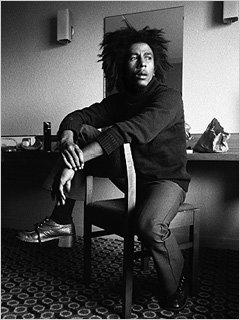'Bachelorette' and the video-on-demand revolution: How digital distribution is changing indie cinema
When Bachelorette arrived at the Sundance Film Festival last January, the film’s producers were quite clear-eyed about its prospects. The dark comedy — about three hard-partying high school friends (Kirsten Dunst, Isla Fisher, and Lizzy Caplan) and their evening of escalating debauchery before the wedding of another friend (Rebel Wilson) — was based on a years-old play by writer-director Leslye Headland. But just as the feature film adaptation was set to go before cameras last summer, Bridesmaids, which shares some pointed similarities, became a massive, zeitgeist-seizing sensation.
“When Bridesmaids hit, I knew, ‘Oh, now [Bachelorette] is going to look like a knock off,'” says producer Adam McKay, who with fellow producers Will Ferrell and Jessica Elbaum helped champion the film through their production company, Gary Sanchez Productions. So McKay turned his sights beyond U.S. theaters, to the European release (“I thought they’d enjoy the darkness of the movie”), home video, and cable. One thought that did not cross his mind? Video on demand. “No, no,” he says. “I wasn’t thinking VOD at all.”
Even after Bachelorette was snapped up by RADiUS, The Weinstein Company’s brand new label focused on alternative distribution, McKay remained skeptical at the plan to release the film on VOD a full month before its theatrical debut Sept. 7. “It just didn’t seem like that big of a deal to me,” he says with a chuckle. So you can imagine McKay’s surprise when, within 48 hours of its digital premiere, Bachelorette hit number one on the iTunes video-on-demand chart — the first time, it seems, that a film has hit that milestone before hitting movie theaters.
“I’m like, ‘What?!'” says McKay of his reaction. “And the movies it [was] ahead of, big [studio] movies like 21 Jump Street and The Dictator –we couldn’t believe it. It was one of the more surprising things I’ve honestly ever experienced.”

In truth, Bachelorette (co-produced by BCDF) is just the latest indie film to find great success in the burgeoning world of digital distribution. Movies like 2011’s Margin Call and 2010’s All Good Things have paved the way for a new release model in which films destined for theaters also debut via a cavalcade of on-demand outlets, from satellite and cable providers like DirecTV and Comcast to web-based companies like iTunes, Google, and Amazon.
“There are people who just prefer to go to theaters to see a film,” says Eamonn Bowles, president of Magnolia Pictures, one of the leading digital and theatrical distributors of indie films. “And there are a lot of people whose eyes are bigger than their stomachs. [They] would love to go out to the theater more often, but really can’t because of their lifestyles.” Not only does VOD service over-busy cinephiles, it finally allows heartland audiences that have historically been underserved with independent film a chance to be the first to see the buzziest festival movies. “You’re able to see it while other people in New York or LA or Chicago or San Francisco are able to see it too,” says Jason Janego, co-president of RADiUS. “So you’re part of the discussion, wherever it might be.”
The tricky part is figuring out how to incorporate a digital release into a film’s rollout: Does it come before its theatrical debut (called an “ultra” release), or does it happen simultaneously with the theatrical release (i.e. “day-and-date”)? “It’s not one-size-fits-all,” says RADiUS co-president Tom Quinn. “Every single film is going to be different in how they perform, even in this model.” (One big difference between the two: Price. Ultra-release films generally run around $10; day-and-date generally around $7.)
First, distributors look at the film itself to decide if an “ultra” release could work to its favor. “You need either a major star, or a very recognizable genre,” says Bowles. “You’re looking at a TV menu. If it [has] actors that no one’s heard of or a premise that doesn’t really leap out at you, it’s hard to get people to buy something if they don’t know anything about it. Because there are no reviews to speak of, really, when it first hits.” So: Kirsten Dunst boozing it up with her besties in Bachelorette? Check. Richard Gere trying to cover up a financial disaster and a tragic accident in Arbitrage? Check. Eric Bana and Olivia Wilde as robbers on the run in Downfall? Check.
Once the movie hits VOD, the hope is that audiences will click to it, so to speak, and help spark the word-of-mouth campaign for the impending theatrical release — without the massive expense of marketing a major film. “Not only is [VOD] a marketing tool,” says Quinn, “but more importantly, it’s a revenue generating marketing tool.”

But if the film is missing one of those key elements, day-and-date may make more sense. “They need reviews to establish their quality in people’s minds,” says Bowles, who released the three-hour Bob Marley documentary Marley earlier this year via a day-and-date release.
While it may seem somewhat counterintuitive — wouldn’t VOD ultimately take away some of the money the movie would otherwise be making at the box office? — when it’s working right, this “multi-platform” release pattern forms a mutually beneficial feedback loop, with the VOD release fueling the theatrical box office, and the theatrical release raising awareness for VOD. “You’re only creating more audience by showing your movie,” says Quinn. “If it has good word-of-mouth, then you should show it to as many people as you possibly can.”
And without VOD, independent cinema was looking at an increasingly troublesome marketplace. “The truth is the reason why we’re here, many years ago, our world, films that are released on 600 prints and under, got hammered,” says Quinn. “All those mini-major [indie distributors] went out of business. There were double the number of films fighting in that space while advertising had gone up and the return on our dollar was a tenth of what it was only two years prior. So we’re all scratching our heads going, what do we do now? A lot of distributors sit around and go, ‘Well, we’re opening today, we’re going to sit around and pray and see what happens.’ This approach to multi-platform distribution, for us, has turned it back into a business.”
Quinn’s not the only one who’s noticed the change, either. “I’m sure a lot of films will keep doing this,” says Bachelorette costar Adam Scott. “A lot of movies that I’ve been in that otherwise wouldn’t have been really seen — even [the Starz series] Party Down — thanks to iTunes and Netflix. It becomes a part of the vernacular, whereas before [indie films] have been tough to find in the sea of stuff. You’d really have to work hard to seek it out. Now it’s much more accessible.”
The most important part of this model, however, remains the good, old-fashioned movie theater. “People want to consume, more than anything, theatrical films,” stresses Quinn. “I don’t go out to the theatre to see a VOD premiere. Likewise, at home, I want to see a theatrical movie.” Without the imprimatur of legitimacy of knowing this movie is showing in theaters, audiences may not be nearly as interested. As Bowles puts it, “Theatrical publicity is the most important moment in a film’s life.”
It’s likely to stay that way for quite a long time. Theatrical exhibitors famously balked last year when Universal briefly flirted with releasing Tower Heist on VOD three weeks after hitting theaters; major filmmakers like James Cameron and Peter Jackson protested DirecTV’s decision to make their films available on demand eight weeks after opening in theaters.
But for independent cinema, VOD is already a way of life. And for at least one film fan, that’s just fine. “Watching things on my iPad, it’s a great experience with a nice HD screen and everything,” says Scott. “I don’t think it really takes that much away. I of course prefer to see things in a movie theater, but when you’re busy, watching a movie on an iPad is a great viewing experience.”
(Additional reporting by Dan Snierson)
For more on Bachelorette and video on demand, check out this week’s issue of Entertainment Weekly, on newsstands and tablets now.
Follow @adambvary
Read more:
‘Bridesmaids’ the most popular video-on-demand title of all time
‘Bachelorette’ trailer: Watch Kirsten Dunst, Adam Scott and James Marsden enjoy some NSFW thrills


